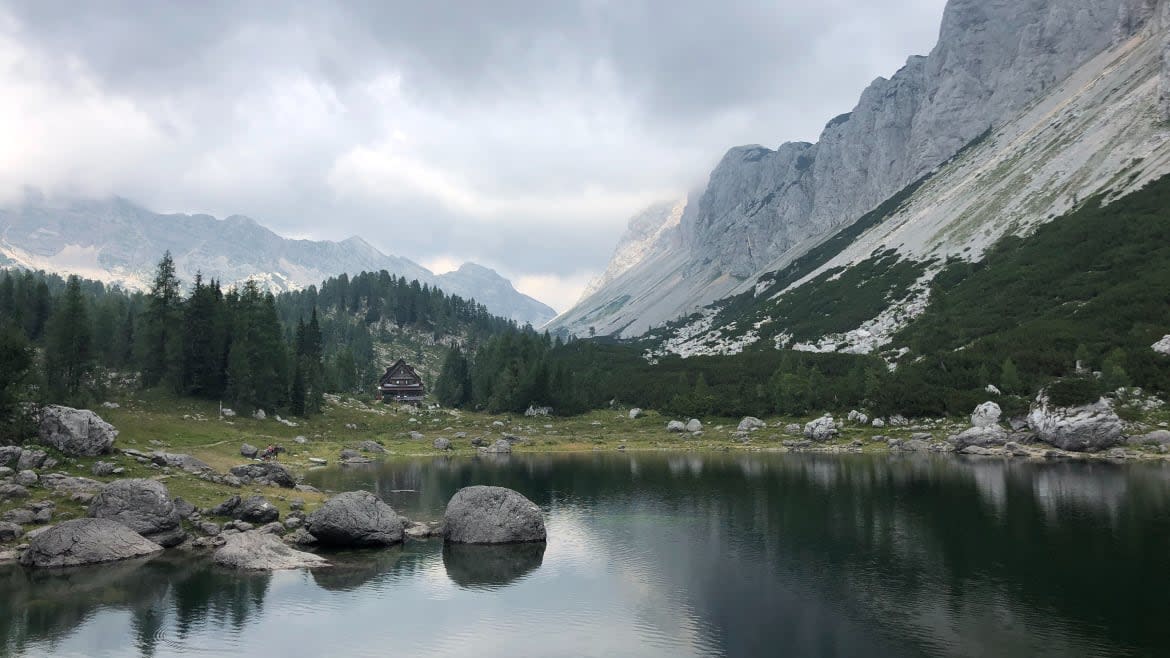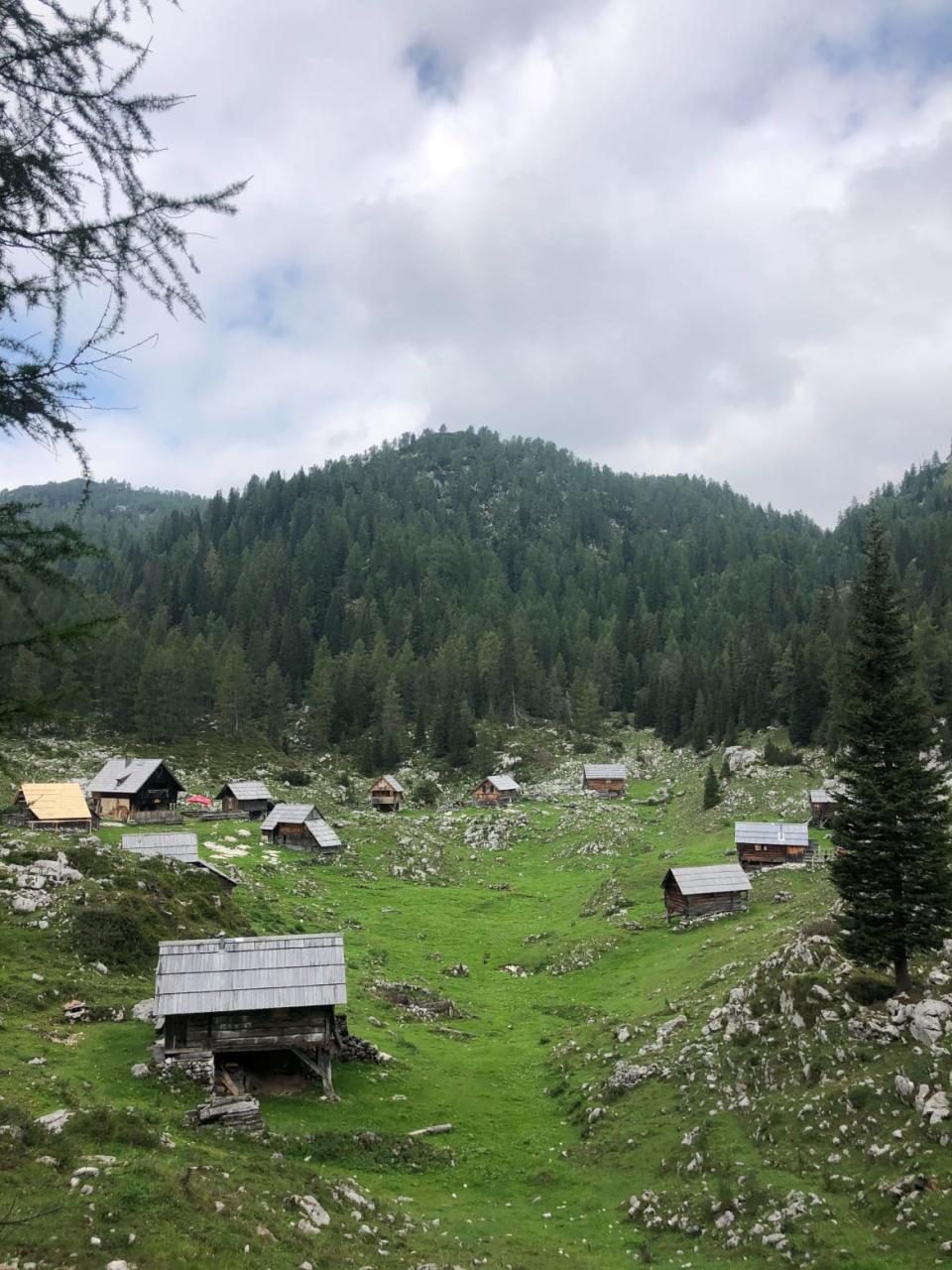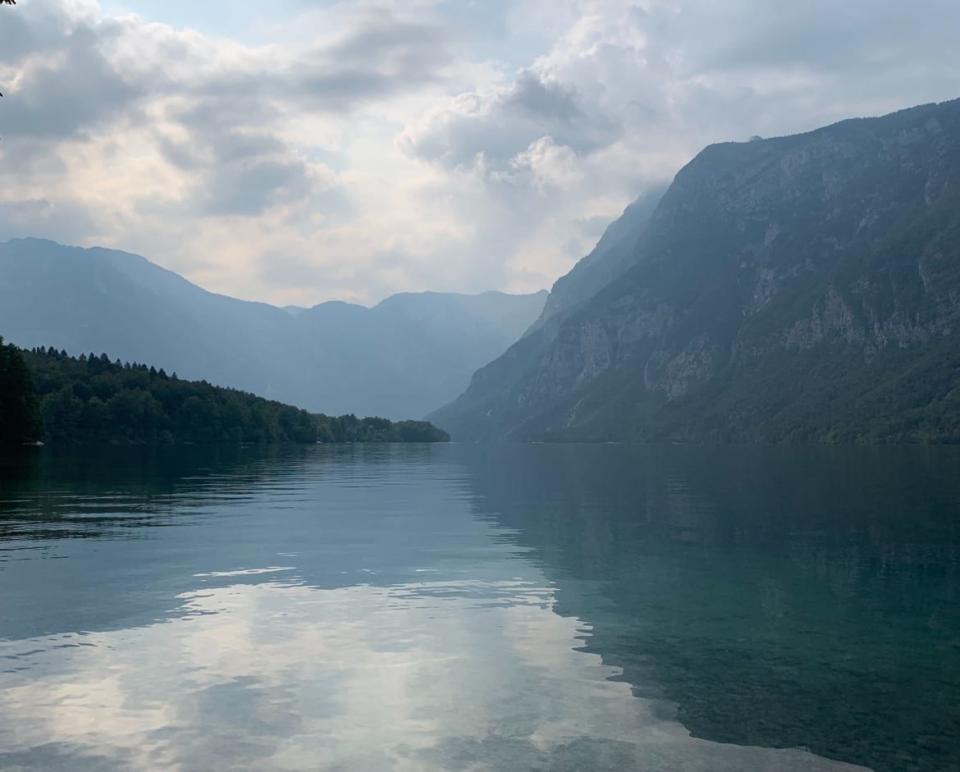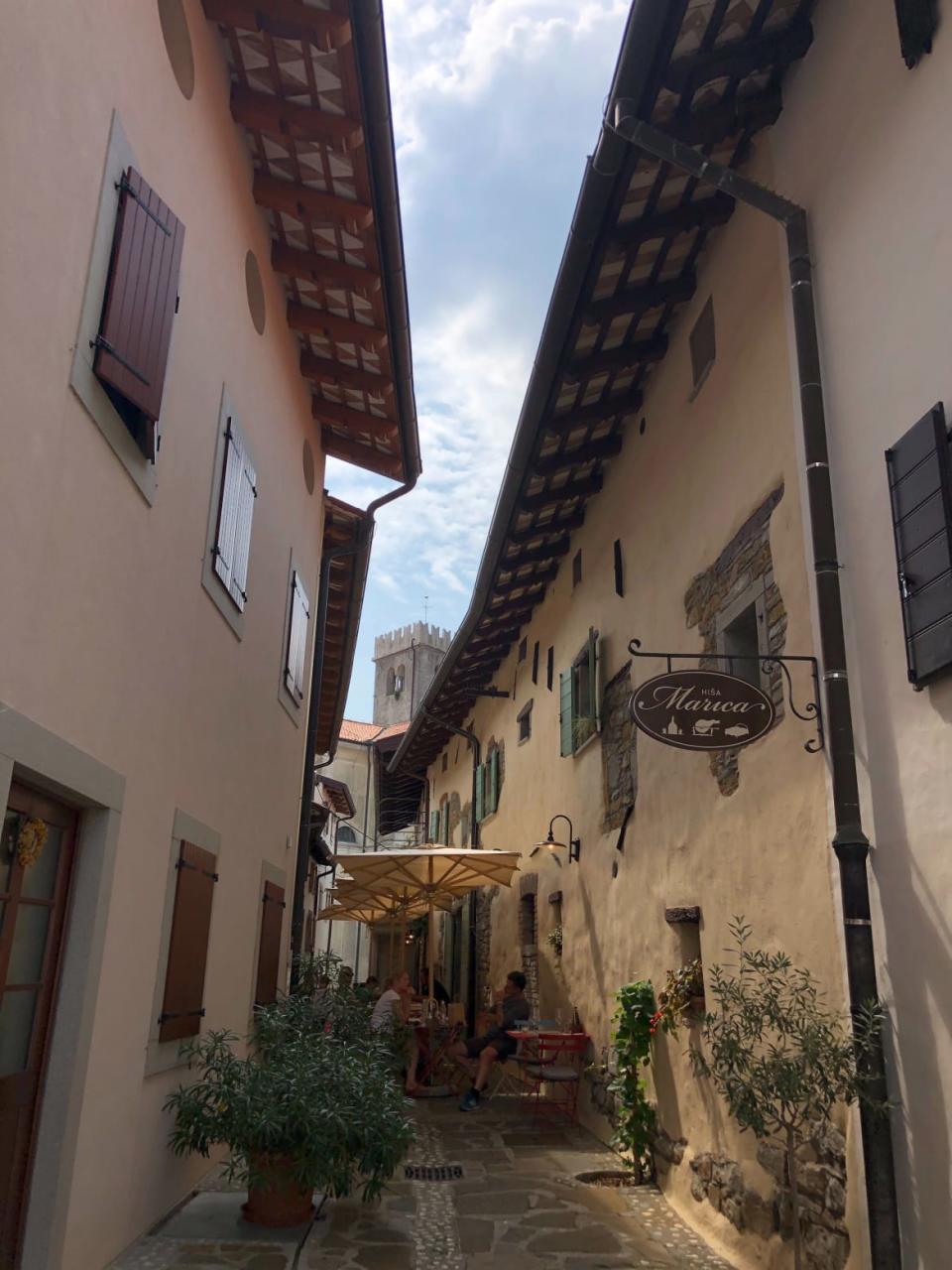For Europe’s Best Destination, Look Just East of Italy

There are places I visit on my travels where I feel an irrational longing. I ponder a slower, peaceful life that in reality I know I’m not capable of leading and would likely cause me to kill somebody. Slovenia, my end-of-summer escape, was one of those places. With scenic hikes ending with swims in turquoise lakes to charming villages in picturesque wine country, it stirred within me a certain wistfulness. Thus it’s no surprise that it’s the latest selection for our twice-a-month series on underrated destinations, It’s Still a Big World.
Despite being essentially inexpensive Switzerland with some sea access throw in, Slovenia is in a strange position when it comes to tourism. One of its sights is arguably more famous and recognizable than the country as a whole. But leave the confines of Lake Bled and the crush of tourists jockeying for photos of its island church and you’ll find yourself richly rewarded. And the most refreshing thing about spending time in non-Lake Bled Slovenia is that here you escape by living out the high-quality life that most Slovenians take for granted. In fact, my best recommendation to anybody doing an extended trip in this small but action-packed country (you could spend a day starting with a hike in the Alps, have lunch in wine country on the Italian border, and end it in the Mediterranean) is to do just that—live like a Slovenian.
My trip to Slovenia began at the tail end of summer with a whirlwind start—after an early morning plane ride (one of us was coming off a weekend in Berlin) we were whisked off to Lake Bled—which, don’t get me wrong is beautiful—for lunch at Vila Bled. Stuffed, we took off again for our first misty hike in Triglav National Park in the country’s northwest corner.
We hike a lot—my partner had just attempted to summit Chimborazo in Ecuador before a storm turned him back at 18,000 feet—but something about that day felt exceptionally grueling. Our guide was the amiable Marko Petek (if you’re looking to do a hike-focused trip in Slovenia he’s your man) who would 100 percent be played by Dean Norris if something cinematic-worthy were to befall us. We were climbing Mt. Viševnik, which starts at the Pokljuka ski and military complex, ascends through a spruce forest (“Good for the violins!” Marko kept saying), and ends with a spectacular view of Mt. Triglav, which is the highest peak in the Julian Alps. In what became a theme for our hikes in Slovenia, after toiling up through the forest and then the brush, when we reached the ridge line it was as if Petek was a magician and this was his reveal. All around us were the rising and falling craggy peaks of the national park, perpetually hidden and revealed by the fast moving clouds.
Driving before and after the hike (to our quaint and impossibly cute Tourist farm Ročnjek for the night), the first thing that is very apparent to anybody who has traveled throughout former Yugoslavia is that western Slovenia is far from the Balkan stereotype. The landscape is bucolic with immaculate alpine houses, well maintained infrastructure and towns, and you could honestly swear you were in southern Austria. It all looks nice and new but not in a tacky post-communist way. Even the shepherd’s huts that dot the landscape are delightful.

The cabins for rent along the hike.
The next day was one of the best days of my entire summer. We drove from our farmhouse to the trailhead for a hike in Seven Lakes Valley to Koča pri Triglavskih jezerih, an alpine hut on a lake. The trail works its way up the mountain and then hugs a ridge, passing by multiple cottages (where you can stop and get food or a beer) and ponds along the way. About a third of the way there one finds a collection of huts that individuals can rent out for an evening on the mountainside. But the reveal here was unlike any other I’ve experienced (although I have subsequently learned it is normal in the region.) The trail ends in a valley in the mountains. At the valley’s open is an aquamarine pond reflecting the mountain face running alongside. Just opposite the pond, nestled in pine trees as if Disney himself had created this capital-R Romantic scene, was a chalet-style “hut.” (They refer to these mountain chalets as huts, which is akin to those calling the Newport mansions “cottages.”) There, sweaty and feeling good from our hike, we dined out on the simple but decent fare on offer and capped it off with a beer. I honestly can’t think of anything more civilized than a rustic chalet at the top of a mountain where I enjoy a carb-heavy lunch with a beer, but let’s just say I must suffer from a lack of imagination.
That’s because to cap the day off, after descending back down, Marko had a surprise in store for us. The trail to Koča pri Triglavskih jezerih sits just above another giant lake in Slovenia that is turquoise in color and surrounded by mountains—Bohinj. However, because of the lack of a photogenic church on an island, Bohinj isn’t overwhelmed by bus tourism. So we pulled up, stripped down (I remembered my bathing suit, my partner went in his briefs, which passed as a suit in Speedo-friendly Europe), and waded out.

Lake Bohinj.
Blissful doesn’t even begin to describe the experience. No power boats are allowed, so you could swim and float out a couple hundred meters into this crystal clear lake, soak in the dramatic scenery, and not be bothered by anything. In fact, while Marko swears that if you tried to berth a kayak anywhere on this lake you’d likely stumble across young lovers, out in the lake I heard nothing except the water and my own breathing. Sadly, we had a reservation for dinner we had to get to (at the delightful Resje Restaurant) but I know I’ll be back. I now think all good day hikes should have a rustic cottage lunch at the summit followed by a post-hike swim in a magnificent lake.
On our final day with Marko, and the final day of the hiking portion of the trip, we took the car train (a bizarre yet efficient experience) to Most na Soči, a town at the confluence of the Soča and Idrijca rivers. Many of the drives here in Slovenia hug a river, and few are as beautiful as the Soča River and the valley around it. It’s well known for its outdoor activities and full of splendid little villages like Kanal, famed for its diving bridge (word is the Brits have gotten the memo on this region and are already buying what are, for them, inexpensive country homes).
Our third and final hike has a bit of a deterrent—to access the trail you pass through the mountain pasture of Zaprikraj and an actual dairy farmhouse. If you aren’t dissuaded by the manure, the trail takes you up Mount Krsji, which overlooks former battlements from World War I. Up on top, one could hike for hours more along the dragon-like ridge line and gaze down at the river valley below. Sadly an incoming storm had us rushing back down.
I was already in love with Slovenia, but the following day when Marko dropped us off in Šmartno I found the country spicing up our romance by throwing something unexpected at me—wine country.

The hillside town of Šmartno.
You see, in the westernmost tip of Slovenia along the Italian border (rendered meaningless by Slovenia’s membership in Schengen and the Eurozone) one finds the rolling hills, vineyards, and hilltop villages that would make you swear you were in Italy or France. But unlike a lot of Italian or French (or other major) wine regions, the Slovenian wine region is still incredibly laid back and has a family vibe to it. Indeed, the most apt comparison is perhaps to Oregon, where you will go for a tasting at a winemaker somebody recommended and find it’s in a cellar attached to their modest private home.
It was at one of the cellars attached to a private home (arranged by Mtic Pirih of Ride Around) where we tasted the work of Kmetija Prinčič Wines. Not only would I send anybody and everybody here because of the wines (the whites were fantastic) but also because of the owner, Tomaz. All Tomaz seems determined to do is put you at ease so you can enjoy his work. I can’t repeat 99 percent of the jokes he told that day (because I now realize I was too drunk to take a lot of notes), but when I asked him how to describe the Slovenian people, he responded, “[We] work like Germans, eat like Italians, and party like Serbians.”
After days spent in the immaculate alpine region and then soaking up the very Western wine region, the thought I found myself constantly returning to is that, while painful for anybody, it must have been especially painful for the Slovenians to be trapped on the wrong side of the border during Tito’s Yugoslavia. After all, to my eye at least, the people and way of life in the western half of Slovenia had much more in common with Italians and Austrians than much of the Balkans.
That night we went to a celebration for Slovenian wine, and at the dinner, in between listening to people talk about the biggest issues in their lives, I was asked over and over what I thought about Slovenia and how it compared to other destinations. And I told them I’ve never been in a country where the people seemed to have no idea just how good they have it. When I pressed them on what the hot-button issues were for the country, people ran out of things to say after health care and wolves. Which isn’t to say there aren’t problems (for instance, being on the euro is a double-edged sword) but they seem far fewer than the benefits of a life surrounded by fantastic nature, friendly people, and good wine.
And for those who need a trip to have some sort of urban experience, few mid-size European cities receive such universal acclaim as does Ljubljana. A smaller mix of Prague and Vienna with some of its own flair, its riverwalk is one I could daydrink beside every day of the summer. It’s a university city so even though it only holds a quarter of a million people, it feels very alive and vibrant. Everything was a quick walk from Grand Union Hotel where we stayed, but the highlights in this city were undoubtedly the works of Jože Plečnik, the Slovenian architect whose Gaudi-esque works in Prague, Vienna, and Ljubljana are now iconic but once bore the wrath of Archduke Franz Ferdinand. One of the curses of travel is that hindsight has us wishing for more time in a place we only briefly taste, and that was me in Ljubljana.
As of writing this, Slovenia is at a fascinating point when it comes to tourism. Most of the world doesn’t realize just how much there is beyond the Instagram-ready Lake Bled. But word is trickling out, because that’s the nature of travel these days. First there was Portugal and Croatia. Now, Georgia is booming. Slovenia (especially since it’s only about a two-hour drive from Venice) will surely be next. Unlike most, I do believe Slovenia can grow sustainably. I hope it lasts, because I know I’ll be back.
Get our top stories in your inbox every day. Sign up now!
Daily Beast Membership: Beast Inside goes deeper on the stories that matter to you. Learn more.

